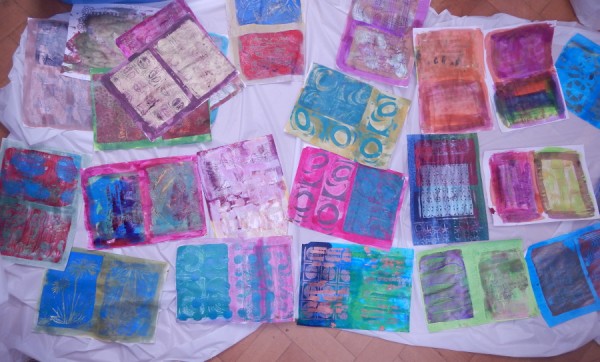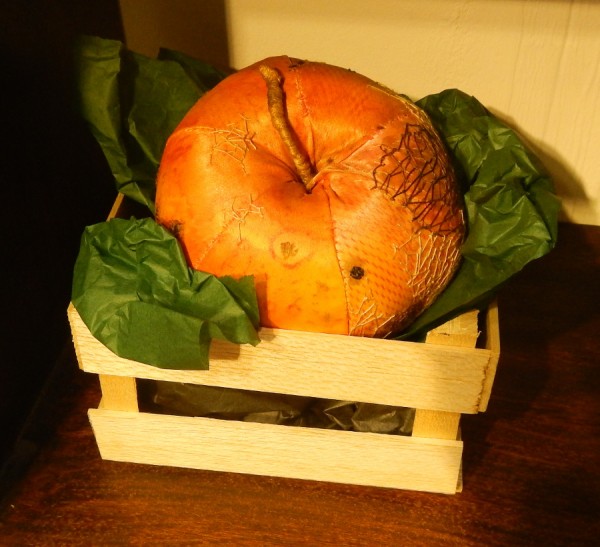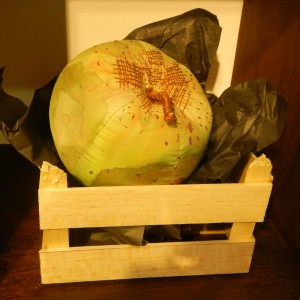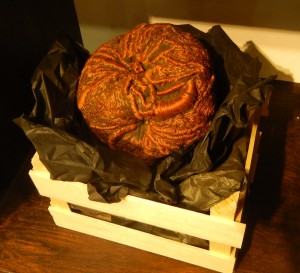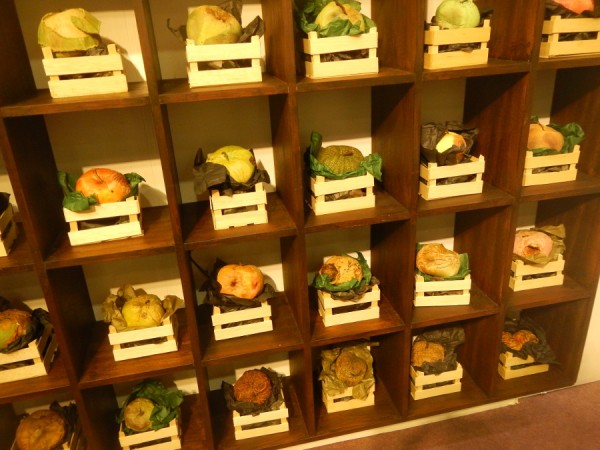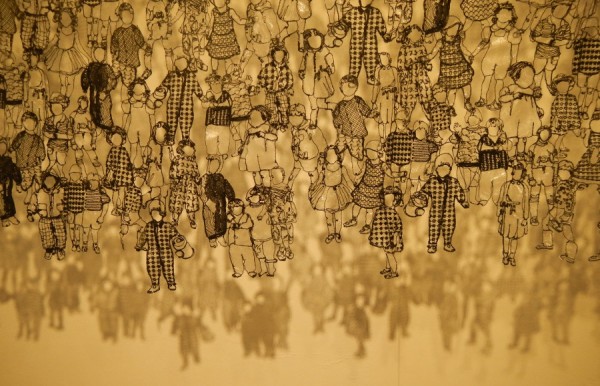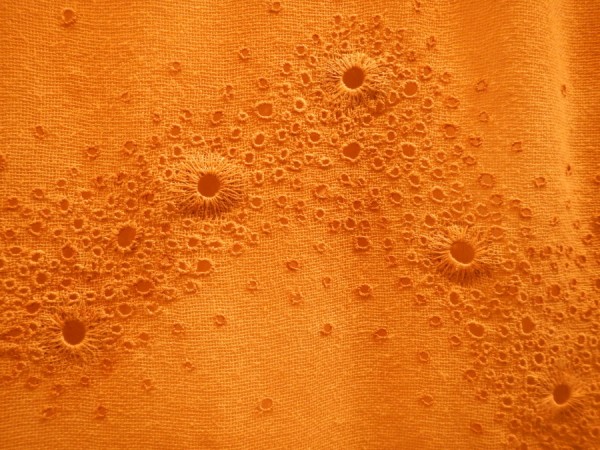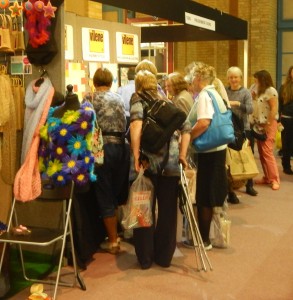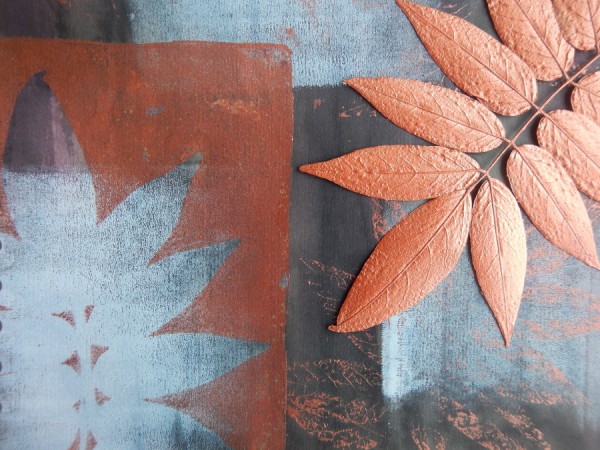 I enjoyed a wonderful day of ‘gelliping’ with Hilary Beattie at the Knit and Stitch show. Unusually for the Knit and Stitch show it was a whole-day workshop rather than a ‘taster’ session, which meant there was time to play and experiment. I was inspired to go on a workshop with Hilary when I read about her teaching on Sam Packer’s blog catch a crumpsey. It is lovely to go on a course with a tutor who is so passionate about teaching, and I found the day very inspiring.
I enjoyed a wonderful day of ‘gelliping’ with Hilary Beattie at the Knit and Stitch show. Unusually for the Knit and Stitch show it was a whole-day workshop rather than a ‘taster’ session, which meant there was time to play and experiment. I was inspired to go on a workshop with Hilary when I read about her teaching on Sam Packer’s blog catch a crumpsey. It is lovely to go on a course with a tutor who is so passionate about teaching, and I found the day very inspiring.
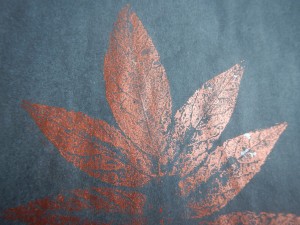 I’ve been wondering what the latest craze with gelli plate printing is all about. How is it different from ‘normal’ mono-printing using age-old surfaces like plastic or glass? Well now I know the answer – you can do all the same things that you do on a glass plate, but there are some extras. The biggest difference, I think, is that unlike printing from something firm, gelli plates will take an ‘impression’ of an item you use as a resist. After inking up the gelli plate and placing a ‘resist’ on it (like a leaf for example) the first print you take from it forms a negative print where the leaf appears as a ‘void’. So far that’s the same as a glass plate. But the difference is in the second print you take from it. The leaf gets pressed into the gelli; when you remove the leaf and take a second print from what’s left, you end up with the positive print of the leaf, with the tiny details like veins all showing. That’s a rather muddled explanation, so I recommend Hilary’s new book that has just come out, which makes it all clear through examples.
I’ve been wondering what the latest craze with gelli plate printing is all about. How is it different from ‘normal’ mono-printing using age-old surfaces like plastic or glass? Well now I know the answer – you can do all the same things that you do on a glass plate, but there are some extras. The biggest difference, I think, is that unlike printing from something firm, gelli plates will take an ‘impression’ of an item you use as a resist. After inking up the gelli plate and placing a ‘resist’ on it (like a leaf for example) the first print you take from it forms a negative print where the leaf appears as a ‘void’. So far that’s the same as a glass plate. But the difference is in the second print you take from it. The leaf gets pressed into the gelli; when you remove the leaf and take a second print from what’s left, you end up with the positive print of the leaf, with the tiny details like veins all showing. That’s a rather muddled explanation, so I recommend Hilary’s new book that has just come out, which makes it all clear through examples.
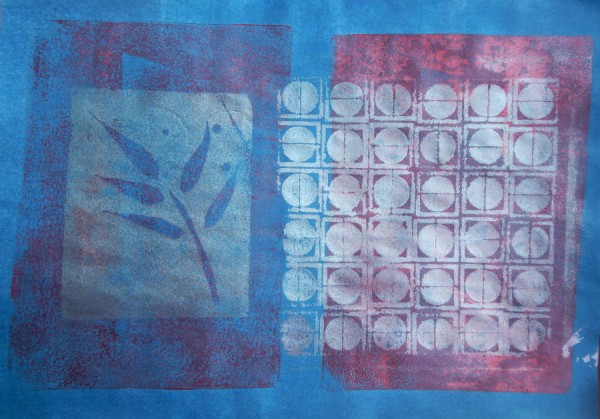
Or you can use the gelli plate just like a normal mono-print surface, like these that I did by printing several layers of colour and pattern. With these ones I was trying to create an impression of depth by over-printing with light and dark, or matt and shiny.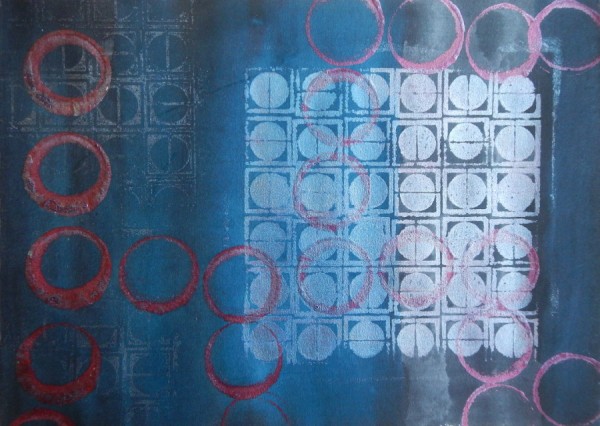
Here are a few prints put out to dry (below) that were done by the rest of the class. I would really recommend a course with Hilary – she’s like a human whirlwind, good fun, very spontaneous and not at all precious about art. What a great day. And no, I really didn’t have time for a course as I should really have been packing for the move, but it was good to escape from the sea of boxes for a while. Wonderful displacement activity.










